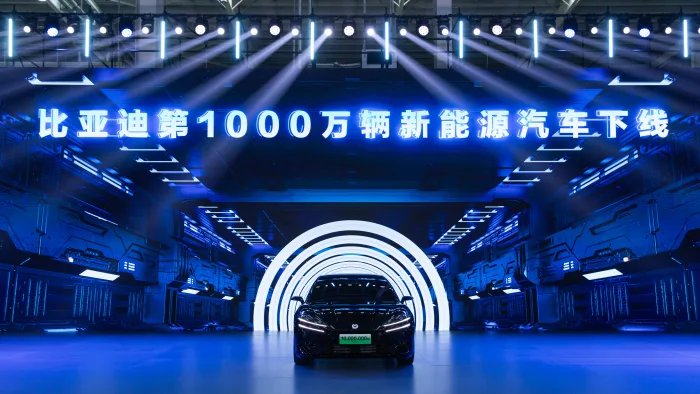BYD wants to sell more than 300,000 cars in Europe by 2026, capturing 5% of the European market. Currently, BYD's cars imported into the EU are subject to an additional 17% import tariff. BYD has plans to open a manufacturing plant in Hungary. It may open a second plant in Turkey.
BYD’s on everyone's lips now, and that’s a fact. This Chinese automaker once only made poorly-made gas-powered clones of Japanese sedans, pivoted to plug-in vehicles. Now, roughly 15 years later, BYD is one of the largest vehicle brands on the planet. Its plug-in vehicles are a stone’s throw away from catching Tesla in China, but it’s also been making huge inroads in Europe, despite pushback from EU tariffs meant to stifle Chinese brands from undercutting Europe’s own EV efforts.
Still, BYD’s pushing forward, and we’ve got some more information as to just how BYD itself might feel both about China and as it expands outward into other markets.
Stella Li, the Vice President of BYD Global, sat down with our colleague Alessandro Lago, Motorsport Network’s Automotive Editorial Director for Europe. The two had a wide-ranging 30-minute chat the brand’s successes, its headwinds in the global market, where it plans to go next and whether people are ready for electric vehicles.
“If you’re not prepared for long-term investment in Europe, you should never come to Europe. It’s not simple. It’s super challenging. It’s super competitive,” Li said.
Li said she certainly feels that the world is increasingly ready for electrification. Globally, BYD holds 23% of all of the world’s plug-in vehicle market (often called NEV, or New Energy Vehicles), which Li says is double the percentage of its next closest rival. Of course, that’s a stunning achievement, but Li also insists that the popularity of BYD’s models points to a market willingness for EVs and PHEVs. Thus, its successes at home have emboldened harder to push more into Europe.
One of those pushes includes BYD’s forthcoming Seal U PHEV crossover. This car, already on sale in China as the BYD Song Plus, is set to come to many European markets, slotting in as a crossover counterpart to the Seal EV sedan. Li says the Seal U will have at least 80 kilometers (50 miles) of full EV range, which she thinks will be a game-changer for Europeans, and be the start of BYD boosting its sales in Europe.
“I think you’ll see a big change in the European market,” Li said. Still, despite BYD making inroads, Li admitted that there aren’t enough dealers and aftersales service centers for the models in continental Europe, and it needs to build more. For example, BYD only has 20 stores in Italy—but it plans on having 105 dealerships in Italy by the end of next year.
Those sound like a lot of stores, especially since in some cases the EV infrastructure and revolution is faltering as of late. Sales can be interpreted as slowing. Legacy brands like Volkswagen, Ford and Fiat have been very open about slow-selling EVs hurting profitability and are the reason for shuttering factories.
Li says this is only temporary. In fact, the lull is pretty natural. “When you’re pushing a new technology, growth is fast growing, but then you’ll pause—[demand] will snap back,” Li said.
She also thinks that confusing messaging from legacy EU brands and government, some of which have reneged on their promises to move 100% electrification, have hurt sales. Add in high energy costs in some EU member states, and there’s a perfect storm for EV sales to lull in Europe despite the potential to market willingness.
BYD is dedicated to Europe, even the EU and China tariff spat will likely be resolved soon, and collaboration will continue. BYD’s European production plans (like its factory soon to open in Hungary) will continue.
Verwandte Nachrichten

